Portland’s most underperforming bike quadrant is about to get a very big investment.
Despite their proximity to jobs, northwest Portland residents are significantly less likely to bike-commute than residents of inner southeast, north or northeast Portland. And that’s exactly why Portland’s Biketown system is putting its biggest bet on northwest.
Today’s announcement of a final station map comes on the very same day that a state committee will start debating the fate of the first major bike project for northwest Portland in many years, arguably the key to getting inexperienced bike users comfortably across Interestate 405: the proposed Flanders Crossing bridge.
Northwest Portland is slated to get 12 bike-share stations between NW 25th and Interstate 405, enough to have one within two blocks of almost every resident there. The Pearl District will have eight more, plus two near Union Station and two just south of Burnside.
All in all, the 2.5 square miles of Portland’s bike-share service area that sit west of the Willamette River will have 48 stations — 19 per square mile.
For comparison, here are the citywide average densities in various bike-share systems around the world, compiled last year by NACTO:
Advertisement
Why northwest Portland might be right for bike share, and vice versa
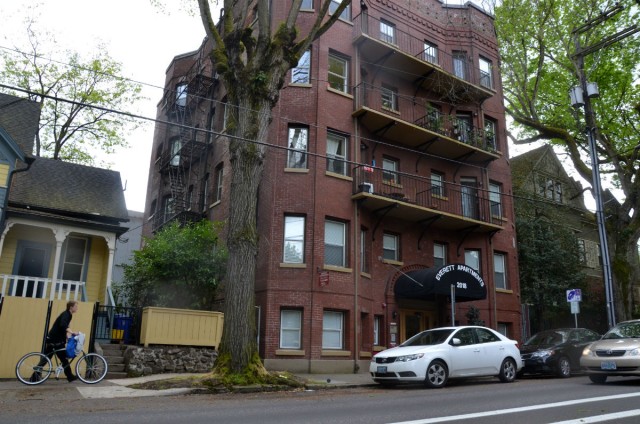
(Photo: M.Andersen/BikePortland)
The people planning Portland’s bike-share system say bike share could create a tipping point in biking for the northwest quadrant.
“Bike share has been really powerful in bringing new people to bicycling, just bringing people who were on the fence to make that jump,” said Steve Hoyt-McBeth, the city’s bike-share manager. “We feel that northwest Portland is really primed to grow in terms of bicycling. We feel that there’s lots of latent demand there.”
“Northwest has a lot of uses within it,” he continued. “It’s close to the Pearl. … We have, for Portland, a lot of medium and high-density housing. … You have all these historic apartment buildings which make riding a private bike kind of a pain because storage is kind of tough.”
Another advantage of northwest: as we wrote during NW Portland Week this spring, it’s got a huge number of low-income housing units, which the city has been working hard to co-locate with bike share stations.
The Metro allocation paying for the city’s contribution to the Biketown system was earmarked, among other purposes, for transportation equity.
Bike share experts: service level in NW will be ‘pretty amazing’
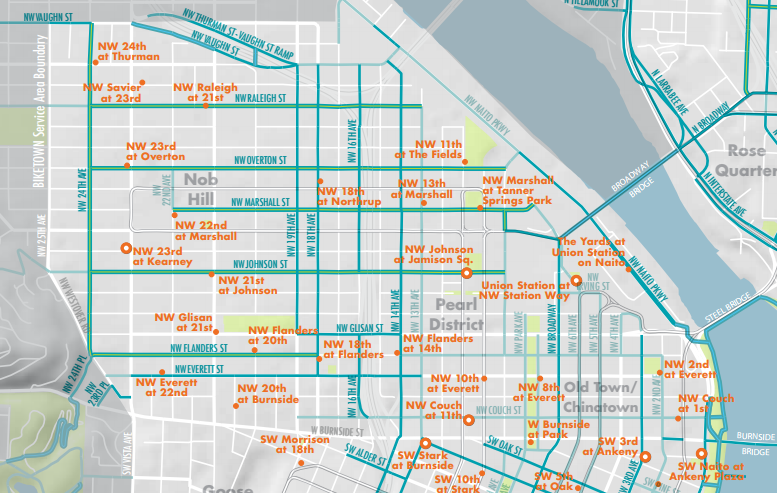
Sean Wiedel, who helps manage Divvy bike share for the City of Chicago and serves on the board of the North American Bike Share Association, said Chicago’s downtown Loop area has “in the range of about 20 stations per square mile.”
For northwest Portland to have comparable station density, Wiedel said, is “pretty amazing.”
“One to two blocks is how far people are willing to walk to get a bike before they start looking for another option.”
— Elliott McFadden, Austin B-Cycle
Elliott McFadden, another NABSA board member who manages Austin B-Cycle, said other cities would envy the sort of station density Portland will be offering on its west side.
“Proximity is key for good ridership,” he said. “Before I worked in bike share, I did some work in the car-share side of things. in car-share folks are willing to work half a mile or more to get a car … With a bike, we found one to two blocks is how far people are willing to walk to get a bike before they start looking for another option.”
McFadden said Portland’s smart-bike system is part of the reason the density is affordable. Because the docks are mostly just pieces of metal instead of complicated electronic and mechanical systems, having many small stations is relatively cheap.
“The smart bikes may allow them to do a lot more of that density that a lot of us would love to do if we could afford to do it,” McFadden said.
State committee is evaluating a crucial bridge project today and tomorrow
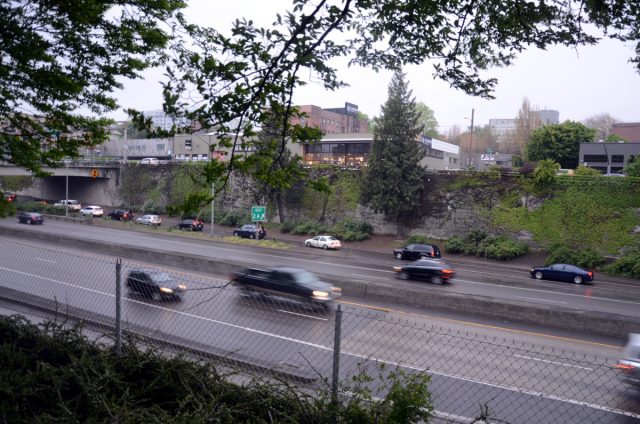
(Photos: M. Andersen/BikePortland)
The big risk of the city’s bet on bike sharing in northwest Portland is that Biketown could fall prey to the other major obstacle to biking in the area: the lack of infrastructure.
There is currently no crossing of I-405 that doesn’t essentially require bike users to cross a freeway onramp. Most streets, packed with cars on both sides, require bikes and cars to share space despite high speeds and traffic counts even on the officially designated neighborhood greenways.
The gas tax approved by city voters last month will fund some useful improvements, and others are already in the works. But the biggest prize would be a $5.9 million biking-walking bridge over I-405 at Flanders, and the continuous neighborhood greenway it’d create between the Northwest District and the Steel Bridge.
For the project to win the $2.9 million in state funding requested, the state committee will have to be persuaded that the bridge is of statewide economic significance. One might argue that a low-stress link enabling thousands of car-free trips every day between two rapidly growing job and residential districts would qualify, and in fact in March a committee of biking-walking experts ranked it as the third highest priority out of 22 biking-walking projects statewide.
But a different committee of people from the Portland area later scored it, like other bike-related projects in the area, as a relatively low priority.
Today and tomorrow, it’s up to the final review committee to reconcile those two rankings and decide whether to recommend funding for the bridge. Stay tuned.
— Michael Andersen, (503) 333-7824 – michael@bikeportland.org
Our work is supported by subscribers. Please become one today.



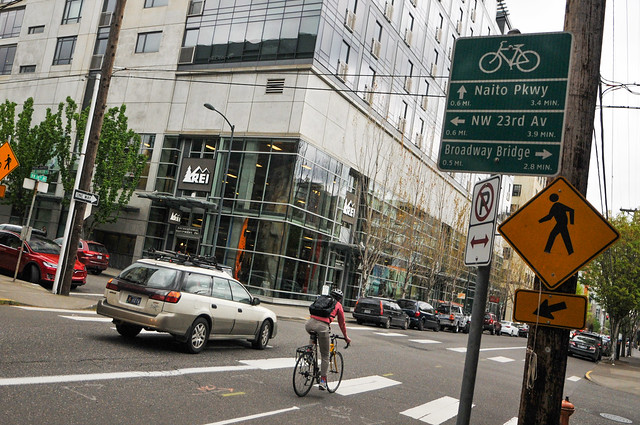

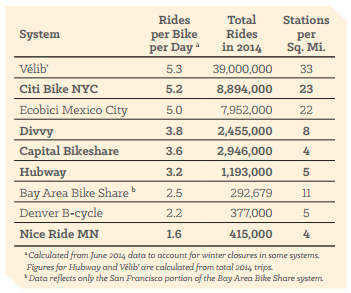
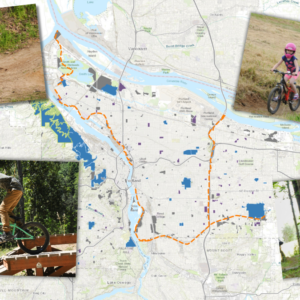
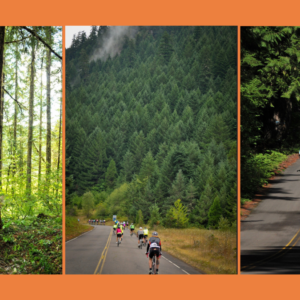

Thanks for reading.
BikePortland has served this community with independent community journalism since 2005. We rely on subscriptions from readers like you to survive. Your financial support is vital in keeping this valuable resource alive and well.
Please subscribe today to strengthen and expand our work.
Looking forward to joining the monthly orange ride up to Pittock Mansion.
I’m delighted by the coverage map for NW. Glad to see the City finally starting to take NW seriously when it comes to biking.
Now, to upgrade those greenways.
Where is NW Johnson on the to-do list?
Johnson is probably the lowest hanging fruit for an upgrade.
one of a non specific group identified in the assessment report. on the same level as Ankeny and Clinton (page 22).
NW Johnson and NW 24th have probably had the most advance work done so far.
http://www.portlandoregon.gov/transportation/article/542747
Yes. *Please*.
Diverters?
When blocks are ~500 feet instead of ~250 and people are gunning around looking for parking or only driving a few blocks on the street anyway, is that the most effective solution? Johnson westbound is uphill for bikes, at 22nd ave you’re ~90 feet up from 12th, ~50 feet up from the bike lane on 19th, figure a comfortable pace is 10mph. 90th percentile auto speed is ~26mph at 22nd. That’s a big differential. October 2015 traffic count was ~1k cars.
http://bikeportland.org/2015/08/24/city-council-will-weigh-new-neighborhood-greenway-guidelines-wednesday-156216
That’s already at the lower guideline mentioned here.
Remove the parking and add protected cycleways. After all, as John puts it below, NW already has “incredible multi-modal options”, so why are we subsidizing driving?
Johnson and Kearny could function as a couplet for cars, similar to Everett and Glisan. Johnson could then have a parking protected cycleway. The sharrows don’t do much do slow down vehicular traffic and the impulse for drivers to pass right before a stop sign.
NWDA is strictly against any additional couplets in their neighborhood, and those two streets are poor choices for one, regardless.
Diverters are anticipated.
One solution for the uphill problem, that also gets at the diverter goal, is a one way shared downhill lane with a contra-flow uphill bike lane (slower speeds). If the street is 36 feet wide, the bike lane can be parking protected. A similar concept is being considered for Hancock east of 45th.
One way shared and a contraflow bike lane uphill could work well there, nice to hear it’s being considered.
Source? That’s patently not true based on the Greenway Assessment Report:
• More than 2,000 automobiles per day on NW Johnson;
• Between 1,200 and 1,600 on NW Flanders;
• Between 1,000 and 1,800 on NW Raleigh;
• Just under 1,500 on NW Overton;
• Between 2,000 and 4,000 on NW 24th,
depending on location; and
• Upwards of 4,500 on NW Marshall near NW 13th.
And hills never stopped people from riding on Ankeny, Clinton, Salmon, Klickitat, Gladstone, etc.
My point about hills wasn’t that people wouldn’t ride, just that they would ride slow going up it.
https://pdx.maps.arcgis.com/apps/webappviewer/index.html?id=7ce8d1f5053141f1bc0f5bd7905351e6
The counts on Johnsons are lower west of 405 than in the Pearl.
NW Portland Greenways are Greenways in name only.
They have among the worst traffic volumes in the city:
http://bikeportland.org/wp-content/uploads/2015/08/auto-volumes.png
They form a pathetically small and disconnected network:
http://bikeportland.org/wp-content/uploads/2015/08/ngs-map.png
IMO, these facilities need speed bumps, improved signage, and periodic diversion.
Truly unique 😉
I’m pretty stoked about rideshare coming to the neighborhood, but I want to point out that one of the reasons biking is “underperforming” is because we have incredible multi-modal options. Cycling is not the only other option to driving your car. I can essentially walk everywhere or take the various buses, streetcar, or MAX lines that radiate through the area in addition to cycling. That said, I think the addition of bike share will result in me adding cycling to trips where I may only want to ride one-direction, or have concerns about the safety of outside bike parking and don’t want to risk my rig.
Why do people on Bike Portland and elsewhere time and time again make “excuses” for why Northwest is destined to have low bike mode share, for now and for all time?
My guess is that on some level these people are ambivalent about bike infrastructure and increased mode share.
IMO, NW has poor bike mode share because:
1) Its bike infrastructure is sub-par and stressful
2) Its bike infrastructure is disconnected and requires “taking the lane” to get to destinations outside of the neighborhood.
3) Its low mode share is associated with aggressive driving.
I’m not sure I buy the “transit is so great in NW so no one cycles” argument, for a few reasons:
a) The European cities we admire that have very high cycling rates (Amsterdam, Copenhagen) also have great public transport.
b) Public transport in Northwest isn’t that much better than it is in other inner neighborhood. (In some regards it’s worse).
c) For short journeys transit is much slower than cycling.
It’s probably more from people walking than taking transit.
http://imgur.com/kM9kSur
NW Portland has poor transit options. The streetcar and a few bus lines do not make the area “transit-rich”. Bike infra is completely non-existent. Walkability is excellent, however, but in my experience, most people seem to drive there, given how perpetually clogged with motor traffic 21st and 23rd are. Not to mention, the highway drops cars off into the neighborhood.
I shudder to think of the unsuspecting tourist on an orange bike gliding down the east bound Tillicum bridge, initiating the turn at the bottom of the approach and hitting that expansion joint with enough force to knock their hands off the handlebars.
There are plenty Portland area tourists (and non locals on rented bikes) who have visited the bridge since it opened, how many have crashed on those expansion joints?
I was gliding east bound down the bridge and saw a clutch of people at the expansion joint hovering over a fallen rider. The rider was dressed in a fashion that lead me to believe she was experienced. Regardless of your easy dismissal of my comment, crashes occur at this location. Every bike fall does not make it to the front page of BikePortland or the Oregonian, but that does not diminish the fact that they occur and that bike routing on our new bridge is poor and that it included unanticipated hazards.
Not that this is relevant to the main topic of discussion, but I have personally had objects fall from my bike, and been right next to people who have in fact fallen off their bikes at those joints. I’m surprised there hasn’t been a BP-newsworthy event there yet. Which is too bad, because otherwise the Tillicum is far superior in terms of low-stress, safe ride to any other bridge.
I live on Johnson and NW is a great neighborhood to bike in!
The Freddy’s on Burnside is a 10 minute walk or a 3 minute ride. When I stop there on the way home from work in my truck, it takes closer to 15 minutes when circling for parking and walking a couple blocks is factored in.
Crossing the 405 isn’t too bad as long as you are north enough to be able to go under rather than over on glisan or everett.
A lot of the buildings in the neighborhood are quite old and don’t have much in the way of dedicated bike parking, as mentioned in the article. I have 2 bikes that I store in my 370 ft^2 apartment, the laundry room is open to bike storage but seems to mostly be occupied by rusty old schwinns that never seem to move.
Why are they putting job creation above safety at this poin in time. There is not enough housing for the existing local workforce, and they want to boost jobs over everything else.
I think Bike Portland will have some good news to report on this tomorrow…
The Flanders project is important and should just happen without further delay or debate — dependency on car travel is clearly ruining our health and environment.
At the same time, since most of the downtown skyline resides in SW, the city needs to also establish bike routes there too that connect it with the Nw. In particular, SW morrison and yamhill need to be updated with either protected bike lanes or bike sharrows. There is simply not enough car traffic going down these streets (probably because there is only 1 lane plus the max lines).
In the long run, I foresee sw Morrison and sw yamhill becoming part of a larger “wiggle” similar to the Haight Wiggle in San Francisco which connects the Nw to sw in a more efficient and direct manner.
For the same reason that the bus mall shouldn’t get protected bike lanes, neither should SW Yamhill/Morrison because the MAX tracks make turning movements difficult. Yamhill/Morrison are already decent to bike on if you’re going straight anyway. Why not put them on Salmon/Taylor instead? They are already great connections to Goose Hollow, and a connector to the upcoming protected bike lane and intersection at Burnside/18th/19th could be made via 17th, with the cycleway extending up 18th/19th the entire length of NW.
Need to remove the 15 from Salmon first.
Floating bus islands.
Why not just put the lane on the left side?